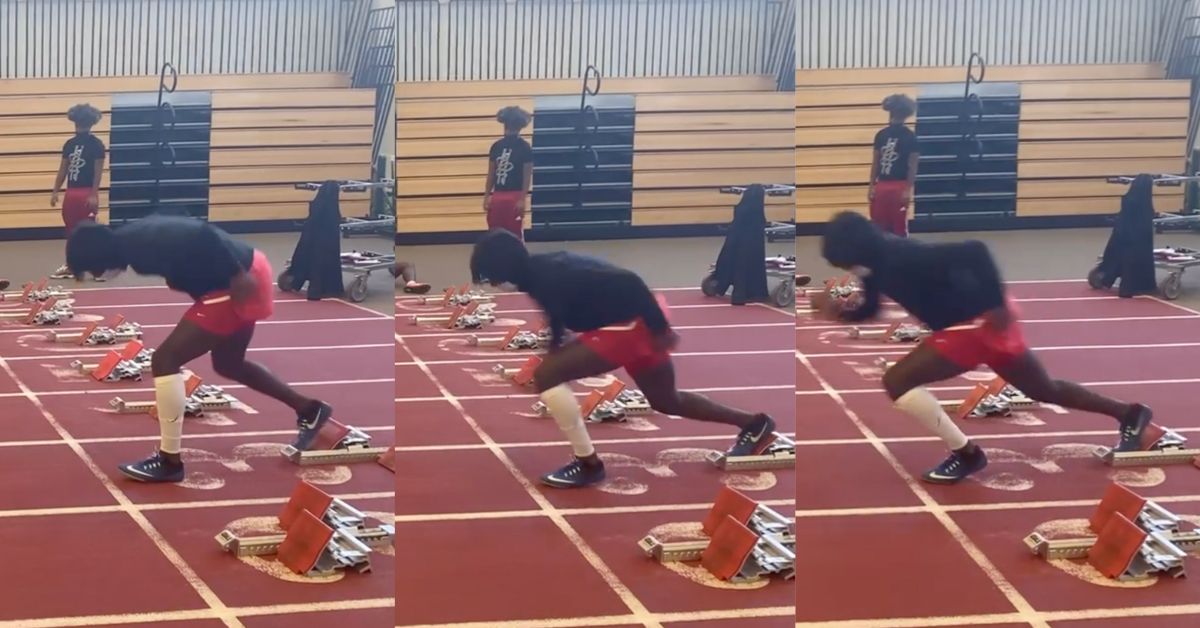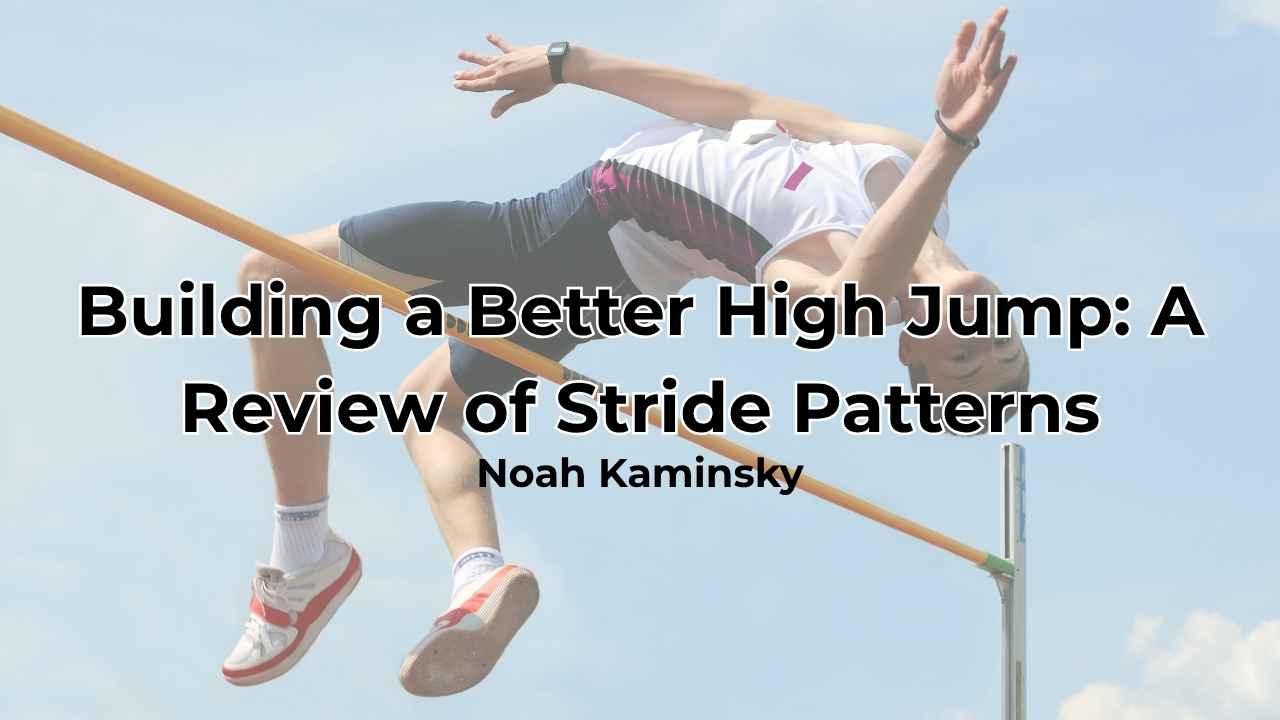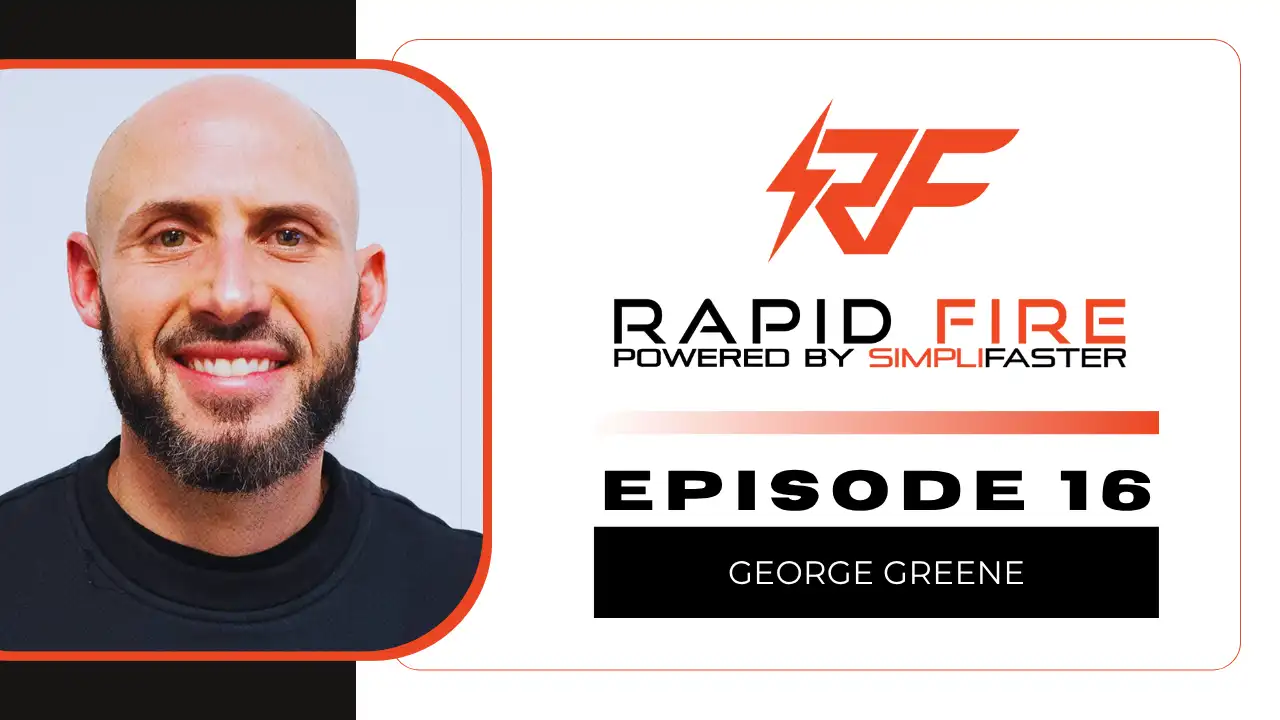It shocks me every time I ask an athlete “how do you work on starts” and their response is “I don’t.” They might do squats or cleans, but they don’t work on the actual start itself. They go through full workouts of vertical force and do nothing to develop horizontal force. There is currently an overwhelming amount of research to back up the importance of horizontal force on a great race start.
One of my favorite papers is from Giuseppe Rabita et al, “Sprint Mechanics in World-Class Athletes: a New Insight into the Limits of Human Locomotion.” In this incredible 2015 paper, Rabita shows that—in elite sprinters—the biggest difference is the 0 step: or, who projects their hips the fastest and farthest, which requires the most force and power. As a high school coach the past 33 years, I believe the 0 step is even more important at this younger level. If you win the 0 step…in most cases, it is over.
So, how can we win the 0 step?
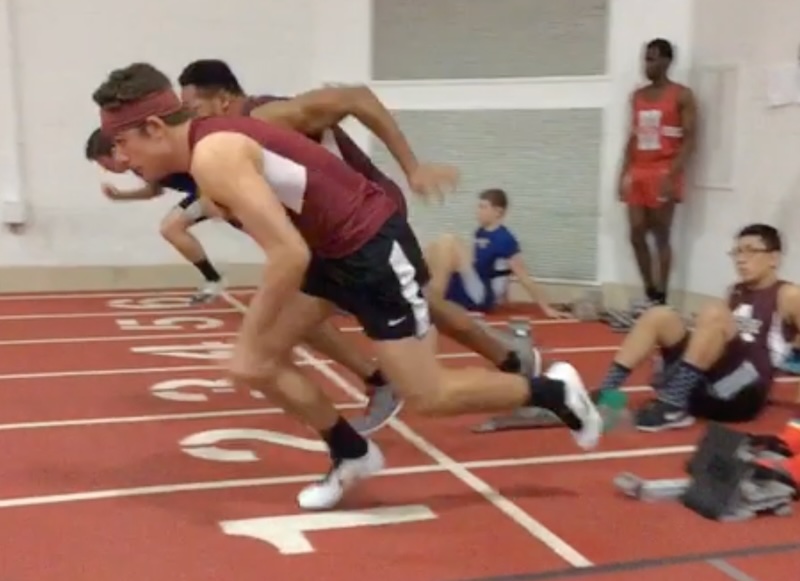
The 0 step is what happens before the athlete’s foot hits the ground. If we have data on what that looks like, we can replicate it in training (caveat: all my data is from my 1080 Motion equipment—my numbers may vary from yours due to environment and other factors). In order to be fast, you need to hit 3.0 m/s or 6.7 mph on your first step. If the athlete has not reached that threshold, their body is not moving fast enough to get the center of mass forward enough to get the first step under or behind the mass.
To be fast, you need to hit 3.0m/s or 6.7mph on your 1st step. If the athlete has not reached that threshold, their body is not moving fast enough to get the center of mass forward enough to get the 1st step under or behind the mass. Share on XThis results in some decelerating effects—for example, the first step becomes a brake because it is too far in front of the center of mass. It lands there for balance, so the athlete doesn’t fall. Another effect to gain stability is to stand up. The subconscious mind is looking for stability. The conscious brain knows it is in a race, so it will set the eyes closer to the finish line. This is why people lean forward in their starts. So, before you try to technique your way to a better start, make sure that you have the initial velocity to support the technique.
An 8 N/kg push should get your center of mass to travel about .5m or .54 yards. That would get the athlete to move 3.0 m/s. Herein lies the “weight room conundrum.” I have seen a huge squatter generate 5 N/kg and 1.3 m/s by the first step. And guys that can’t squat or clean a respectable amount, but can push out at 3.5 m/s generating 8.7 N/kg. It is not always about how much can the athlete lift in any case necessary, but whether they can direct the force appropriately and usefully.
In a traditional weight room mindset, more is better. Or, farther is better. But the problem is in the future of the run. A huge push might be too much for the body to keep up with, resulting in a braking second step that can’t possibly keep up with the projection, resulting in a deceleration early in the run. Bottom line? There is a sweet spot.
Sprint Strength and the 0 Step
What is Sprint Strength for this first push? Sprint Strength is generating 8 N/kg in a horizontal fashion off both feet. The most common error is that athletes push off the front foot and just swing or step the rear leg forward. There is no rear leg drive. Rear leg drive is 40% of the equation on a 0 step.
Sprint Strength is generating 8 N/kg in a horizontal fashion off both feet. The most common error is that athletes push off the front foot and just swing or step the rear leg forward. There is no rear leg drive, says @korfist. Share on XRemember back to the days of Physics class? Force is getting a still mass to move. The back leg has to start the action in motion with a huge shove forward. The huge shove does move the mass forward, but it also rolls the front-leg knee down into a horizontal position while moving the hips forward—ideally keeping the front shin at about 20 degrees. What it should look like is that as the knees are even with the front leg in the blocks, the athlete’s belly button should be over the line.
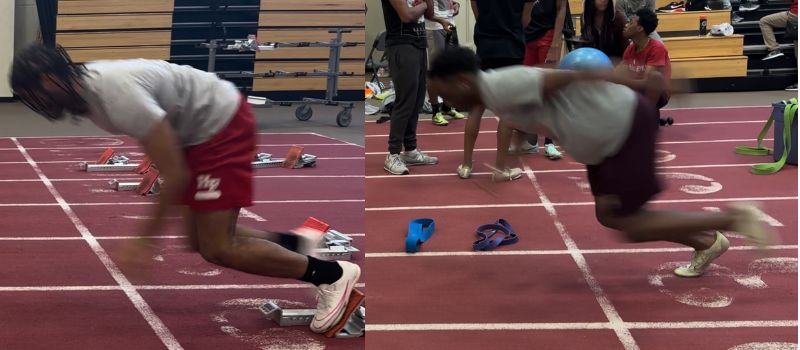
How can I train that huge shove? Elevate the back foot with a focus on pushing the knee down. The higher you place the back leg on the blocks or even a wall, the more forward roll with the front knee you will achieve.
[vimeo 1051742971 w=800]
Video 1. As you can see here, the athlete’s back foot is on top of the blocks—that is usually high enough.
You can eventually move that foot closer to the ground and then put a hand or two down, depending on what you are timing for. If they stumble out, they are not going fast enough to be stable.
Another easy tip is to take a false step with the front foot. By picking up the front foot and driving from there back, it gets the athlete’s momentum moving quickly and their front shin has no choice but to roll forward.
[vimeo 1051743569 w=800]
Video 2. Horizontal push with unloaded 1080 Motion cable to collect data.
For the actual push, readers should note that the athlete above is pushing against the ground concentrically, under no load. What is generating the force in the position? Research says it is dominated by plantar flexion and knee flexor moments. The better sprinter produces double the power of the next athlete from the knee flexor (“Lower Limb Joint kinetics during the first stance phase in athletics sprinting: Three elite case studies,” Bezodis, et al, 2013). It is plantar flexion with knee flexion under no load.
So, we set up a hack squat scenario from a single leg.
[vimeo 1051743803 w=800]
Video 3. Hack Squat Step up. Vastus Lateralis is the main driver. If we push off our forefoot, we can add plantar flexion.
Or we can do a very narrow single leg jump. The key here is to drive with the leg and not extend through the lower back.
[vimeo 1051746219 w=800]
Video 4. Narrow Squat Jump.
Why a hack squat and not a back squat or clean? My concern with a squat or a clean is that we recruit with our lower back to stand up a common movement when pushing or pulling against a bar. A great exercise to deal with this issue is a single, single-leg jump. To make it harder, try driving off the ball of the big toe with the heel elevated. That is the strength that is needed to push.
[vimeo 1051746620 w=800]
Video 5. Strap Hack Squat.
For a more “on the track” exercise to target this quality, try a resisted run. Focus just on the first and second step under resistance. As the athlete progresses, lower the resistance so they have to balance and push.
[vimeo 1051746788 w=800]
Video 6. First step exercise using resistance from 1080 Quantum.
[vimeo 1051751702 w=800]
Video 7. 2-Step exercise with band resistance.
If you are lucky enough and own a 1080 Sprint, focus just on the first step. If the athlete needs to hit 3.5 m/s, put enough tension on the line to slow the athlete down by 50%. Hopefully, if they increase speed at that tension, they are generating more force.
To sum up, our initial move needs to be a minimum of 3 m/s, generating 8 N/kg. If you can’t hit that number, the next chapter is a different story than what it should be.
Since you’re here…
…we have a small favor to ask. More people are reading SimpliFaster than ever, and each week we bring you compelling content from coaches, sport scientists, and physiotherapists who are devoted to building better athletes. Please take a moment to share the articles on social media, engage the authors with questions and comments below, and link to articles when appropriate if you have a blog or participate on forums of related topics. — SF

